|
Sometimes a goal can feel so daunting we never take the first step to reach it. We might feel like change is an all-or-nothing situation in which we can’t try things out, we have to go all-in or refuse the change all together. When it comes to change, people often fear the loss of how things have always been, the stability, and the comfort that may come from (somewhat) knowing what’s coming next. So, how does change ever happen if these are often our responses to the idea of changing things up? I believe it starts with seeing the possibilities, mere exposure to a different way of doing something. (For more on seeing possibilities as it relates to teacher planning, see my blog from earlier this week.) Once you have seen what’s possible, I think it starts with small steps, mini experiments. Research has found that small steps are a powerful way to motivate people to start working towards a big goal (Stanford Business School). So, when you are confronted with the possibility of saving hundreds of hours of planning time each year (you see what’s possible) and you recognize that requires you to change the way you currently do things (ah! feels daunting, scary)…try experimenting with one tiny action (small step). Not sure what a high-leverage, yet manageable action step could be? I am launching a 5-Day Challenge to help teachers streamline their planning time. Sign up, and I’ll send you one small step each day. You’ll also have a dedicated space in our Facebook group to share your questions and successes with fellow teachers and get inspired by others’ big wins. It starts in just a couple of days, MONDAY, MARCH 2. Sign up today so you don’t miss it! To bring it back to the research, there’s another piece to that article by the Stanford Business School I referenced earlier. The full story is, “Research shows that incremental achievements are good early motivators, but their effect wanes as the finish line nears.” So, small steps will get you started, but it won't get you a complete transformation. Knowing this, I’m not going to leave you hanging after you take your 5 small steps. I’ll be sending a lot more support your way! The 5-Day Challenge is just the initial spark. To keep that fire going, I’ll be sharing my most detailed FREE resource yet... So make sure you check the blog early next week for more details. See you in the challenge, teacher superstars!
0 Comments
I love seeing what’s possible. The sense of excitement when confronted with new possibilities inspires me and drives me to take action! Some schools have strong collaborative learning opportunities in place, and some of these may even be designed and sustained by teachers! Last week, I discussed an example of this in the form of teachers visiting other teachers’ classrooms! One thing teachers rarely have the opportunity to do (at least not as part of a typical school-based PD) is to talk about how they plan. While you may share a classroom or planning space with another teacher and get a quick glimpse of how they plan in that time, it’s rare to get a full picture of another teacher’s planning system. We often don’t know how many hours of work teachers routinely bring home, or what percentage of their planning time is grading or lesson planning or researching new lesson resources. I want to dispel the mystery, at least for my own planning story. I’m going to share with you exactly how I spent my planning time as a teacher. As you can imagine, my planning approach in my first years of teaching was very different from my last years, so I will share both where I started and where I eventually ended up. Here we go… YEARS 1-2 While I wasn’t tracking my precise percentage breakdown of tasks at the time, here is my estimated breakdown… Time Spent Planning Outside of School Hours (Per Week): 20 hours My Process: To prepare for class, I read the relevant chapters from a textbook and took my own notes. I typed my notes up as bulleted worksheets, and replaced keywords with blanks. I then made slides for each worksheet with images and the keywords bolded and in red. Finally I created a Do Now and an exit ticket on the computer, printed them out, and cut them. Grading-wise, I hand-graded multiple-choice tests and quizzes. I collected a daily learning journal (usually a do now and an exit slip response) from each student, graded them, and occasionally wrote personalized comments to the students about what I saw them doing well in class or what hopes I had for them for the next class. Percentage of Time Spent on Lesson Planning: 90% Percentage of Time Spent on Grading/Feedback: 10% Percentage of Time on My Professional Growth: 0% Oof. This is hard to look back on. Doing so, I feel sadness for myself and for my students. I don’t think they learned much from my slideshow-worksheet lessons despite the fact I was spending an additional 20 hours each week making the class materials. Luckily, I was introduced to different possibilities for planning, and I ran with those new ideas. YEARS 6-7 After seeing what else was possible, I experimented more boldly with different approaches to planning. I sought out more PD that could inform my experiments. I grew excited at the rapidly shrinking number of hours I spent outside of work on planning. It was thrilling. I spent years tinkering with my formula, and then realized I was saving hundreds of planning hours each school year. Time Spent Planning Outside of School Hours (Per Week): 0-2 My Process: I established a unit arc, which I used as an outline for each new unit I designed. These arcs included 3-5 protocols (class activities) I repeated over and over. Now, my planning focused more on the big picture and prioritizing depth over breadth. I identified the one thing students needed to get out of each lesson, knew the one protocol we’d use as a vehicle to get there, and used my planning time to find specific texts/resources that would give students lesson-specific information or prompt their thinking. Since this approach was much more student-centered, I didn’t need to write comments in student learning journals anymore. Instead, I was free to walk around and tell them directly during class! Another big shift was saying yes to lots of PD opportunities. The more I learned, the easier my planning process became. Percentage of Time Spent on Lesson Planning: 50% Percentage of Time Spent on Grading/Feedback: 10% Percentage of Time on My Professional Growth: 40% At one point, I finally sat down to do the math and realized I was saving myself about 700 hours of planning time a year! I did this even while creating brand new lessons every day and new curriculum each year. The amazing thing was, my students were actually learning more than before when I was spending more time planning! Another exciting piece of this transformation is what I was able to accomplish with my newfound time outside of school. I did things I had always wanted to do—I ran the NYC marathon, and I finished my PhD in 3 years (while teaching). I want to help you achieve the professional and personal success I did. So, if you haven’t already, grab my 50/40/10 Planning Bundle for free. Want more free stuff related to planning time? I’ve got you covered. Over the next 4 weeks, I’m taking a deep dive into all things planning. Later this week, I’m sharing an exciting community challenge to help you take the first small steps to streamlining your planning process. Next week, look for Tuesday’s blog or be sure to read our community email, where I’ll be announcing the release of a limited time offer that will be the most in-depth FREE resource I’ve ever shared on this topic. (Not on the email list? Sign up here.) You won’t want to miss it! Until then, continue to see the possibilities, teacher friends. My previous post highlighted the benefits of visiting other teachers’ classrooms. If you haven’t read that post yet, check it out to learn why peer visitation is a powerful form of professional development. Once you’re ready, let’s dive in and address the question: How do I make this happen? Below are a few ideas to get you started. (Note: Most of these ideas don’t require administrative action. Teachers can set this up on their own!) First, you’ll need a way to get the word out. Use pineapple charts. I had no idea these had a name until recently! (I learned this from Jennifer Gonzalez’s Cult of Pedagogy blog.) Basically, teachers create a public document with different dates/times they are willing to host visitors in their classroom, and they write down what they want to showcase (e.g., Socratic Seminar, a lab experiment, station rotation, a new tech tool). The last school I taught in had network-wide digital versions of pineapple charts, so teachers could visit classrooms in other schools, which was really fun. You can norm whether visiting teachers sign up (to limit the number of visitors at one time) or just drop by when they can. This can be super informal with no paperwork or reflection required. Alternatively, you can add more structure if desired. Next, we’ll look at what structural pieces you may want to consider. Next you’ll want to consider some structural basics. Before we dive into these, I want to emphasize this again: if you’re just starting out, keep it really low-stakes. Get the inspiration flowing, and then you may want to add some structure to amplify the learning. If you want to add some structure, here are some questions to consider: How will you determine the focus of the visit? It’s helpful to be clear on what the visitor and the host want to get out of the visit, even on a general level. In the pineapple chart example, the showcased activity or topic somewhat answers this question. Perhaps the host teacher adds a guiding question to this chart to further clarify their goals for the lesson (and what they want feedback on). A focus question could be: How can Socratic Seminar enable all student voices to be heard? Then, teachers could sign up for the topic and question in which they are most interested. Alternatively, visitors and host teachers could touch base briefly (in person or via email) to decide on a focus question together. Either way, it’s important teachers are at the heart of this decision. This should not be imposed by administrators. (Although, one clear year-long vision that administrators consistently reinforce may influence which topics teachers choose. An example of a focused vision could be: This year, as a school, we want to create classroom cultures that are student-centered.) What norms do you want to set for the visit? Determine if this is decided by individual teachers participating in the visits or on a school (or network) level. For example, I think it’s helpful for visiting teachers to be able to walk around the room and talk to students, but you may want to norm how and when this is done (e.g., only during independent work time when the teacher is not giving directions, should the visiting teacher help struggling students or just observe how they’re working). You may want to provide a loose structure for visiting teachers, maybe a simple note-catcher like a student-focused notice and wonder T-chart, or sentence stems like: the teacher did ___, then student(s) did ____. Maybe you don’t want a formal tool, but I would still norm that the “look fors” are student responses to the lesson. This reinforces that we’re not visiting to critique teacher moves, we’re seeking knowledge around how specific teacher moves impact student learning. How long will a visitor stay? Determine if there is a minimal length of time visitors should be in the class, and at which point in the lesson visitors should leave. This might be best determined by individual host teachers, as it might be lesson-specific. For example, a Socratic Seminar lesson may need to be a whole class period visit, as visitors will benefit from seeing how the teacher sets up the class for success, the actual seminar in action, and the debrief. However, a visit focused on a new tech tool that’s only being used for 25 minutes, would only require teachers to visit for those 25 minutes the tool is in use. How will you debrief the visit? I have participated in visits in which there is minimal debrief, but I’ve always found immense value in face-to-face debriefs where possible. You’ll want to determine what will be shared. Do you want it to be a Q&A, where the visiting teacher asks clarifying questions of host teachers to better understand the context or set up for a lesson? Will the visiting teacher offer feedback? If so, I recommend having a structure that ensures feedback is low-inference and student-focused. Notice & Wonder is a simple protocol you can use, (“I saw X during my visit. I’m wondering about Y.”) In visits focused on offering helpful feedback to the host teacher, have the host teacher share what they noticed first. Another really low-stakes option would be to have the visiting teacher share 1-2 takeaways (i.e., “I’m going to try ___ in my class.”) This is a really quick way for the visiting teacher to communicate thanks to the host teacher and also highlight things the host teacher is doing well. Administrators or teacher leaders may want to explore specific peer visitation models. The bottom of this Education World article shares several popular peer visitation models. My favorites are Lesson Study (teachers plan the lesson together), Peer Coaching (less formalized structure), Critical Friends Group (highly structured—regular meetings of 8-12 teachers, admin, and instructional coach), and Learning Walk (group visits several classrooms to get a sense of broad school trends). No matter how formal the collegial visits are structured, the important thing to remember is that the goal is personal professional growth, not critique of other teachers. The best way to keep this in mind is to structure all visiting teachers’ “notices” or feedback on what they see students doing or saying. A teacher could deliver a beautiful lesson, but if the students didn’t understand anything, it’s useless. Both the visiting teacher and the host teacher learn and grow when they can see the impact of particular teacher moves on students. So, eye on the prize: let’s get inspired to learn and grow as teachers so that we can inspire students to learn and grow as well. I made a little starter kit to get you up and running. It includes a visitation sign-up form you could print and place in the main office as well as a simplified note-catcher to provide some light structure for visiting teachers during the lesson. I would love to hear how you are doing (or plan to start doing) teacher visitations! Share in the comments below or on our private, educators-only Facebook group. Visiting other classrooms has been one of the most energizing forms of professional development I have had as a teacher. I love seeing the possibilities, other teachers’ styles and norms, their pedagogy and their innovative lesson activities and assessment ideas. Often, I leave with a smile and a renewed sense of “Ah, this is why I got into teaching!” Of course, not all lessons are fantastic. I’ve been in classrooms where something has gone wrong—tech didn’t work, student engagement was low, constant interruptions at the door threw the teacher off their game. But, I even found those valuable! Seeing the realness of another teacher’s classroom, the success and the struggle can be both exciting and reassuring. In one, you see new possibilities, and in the other, you can exhale with relief that no teacher is perfect, and you don’t need to strive for perfection either! Aside from the emotional benefits for the visiting teacher, there are additional reasons teachers should visit other classrooms. Professional Growth. As I mentioned, I felt excitement after visiting another teacher’s classroom. But it wasn’t just a feel-good moment that ended when school got out that day. That excitement fueled my desire to discover and explore even more possibilities, and it sparked my desire to learn and grow as a professional. A desire for professional growth is a powerful thing to feed. We know from Hattie’s (2018) research that collaborative teacher efficacy has a bigger impact on student learning than anything other factor studied. Collaboration. I love the African proverb that says, ““If you want to go fast, go alone. If you want to go far, go together.” I tend to go at things alone. I think this might be true for lots of teachers. There’s something about being inside the 4 walls of your own classroom that tends to isolate us from others. Add to that, the competitive way evaluation systems and the scourge of perfectionism can make teachers feel like they’re constantly being compared (or comparing themselves) to other teachers. Education is not always set up for quality collaboration. However, there is incredible potential in tackling a challenge together. An activity as simple as a non-evaluative, learning-oriented visit of a colleague’s classroom is a powerful way to push back on the notion of competitive comparison and change the culture of your school. Model for Students. Students notice so much. They are fully aware when there is another teacher in the room. Interestingly, given the evaluative nature of observations in schools, students may actually think other teachers are there to grade or judge you, and may adjust their behavior and participation accordingly. I’m very transparent with students. I think it’s good for them to know when it is an evaluation situation and when it’s a teacher stopping by to see how we do “x”. Students figure it out anyways. Also, students should see teachers are willing to learn and grow, and they take action to improve their practice. I cringe at the phrase, “I already have my degree,” which is often used to get students to listen and engage in the class. I’ve even used it once or twice when I was at peak frustration. (Oof, that’s hard to admit.) In saying that, we’re communicating we don’t need to grow and learn. We’re done with those things. That’s not the message we should be communicating to students. We should strive to model growth and collaboration and excitement for lifelong learning. Visiting other teachers’ classrooms is a powerful form of professional development. I know we typically think of PD as whole staff meetings with an agenda designed by administrators, but this is also PD. In fact, it’s likely even more effective—and definitely more personalized—than staff-wide PD. If you’re excited about the possibilities for teacher visitations at your school, my next post is all about how to get started. So, go ahead and locate the post that follows this one. Then, read on, inspired educator! Earlier this week, I shared another reframing PD post for leaders. While the essence is similar, this post is written specifically for teachers. I am a big proponent of dedicating a chunk of what little time we have as teachers to investing in our individual growth as professionals. When teachers hear me recommend they should spend more time on PD (remember, I’m using the term to mean your professional growth, not exclusively staff PDs), they usually say, “I don’t have time for that much PD.” While I hear you because I’ve been there, this post details the reframing that helped me embrace the idea of investing in my personal PD and ultimately improve my effectiveness as a teacher. To reiterate: my biggest growth spurts as a teacher came from taking the time to learn a new approach and try it out. Don’t underestimate the power of investing in your learning, even if (or maybe especially if) it seems like your time or energy is stretched too thin to take on one more thing! So, what are the most common reframes I use? Here, I’ll share the 2 most common responses I hear from teachers when presented with a PD opportunity. Then, I’ll share how you could use what I can an opportunity cost reframe. (An opportunity cost is essentially what we’re giving up, what else we could be doing with our time or energy.) Here’s one: The “I can’t take time from grading/lesson planning” response. I often hear teachers say: If I take time away from grading or planning this lesson to learn something new, my kids will suffer. Now, let’s apply an opportunity cost lens. So, how can we reframe that initial response? Try asking yourself these reframing questions: What if the professional development I spend time on teaches me how to plan efficiently and grade faster and it actually saves me time in the long run? What if it helps me build engaging learning activities so that students are on-task and excited to learn every day? What if it means I would be able to stop taking work home—the planning/grading work and the mental stress? Here’s another one: The “I can’t miss class for PD” response. When teachers are offered a chance to attend a school-day PD (like visiting another school or a curriculum planning day or a workshop off-site), I often hear teachers say: I can’t leave my kids; they’ll miss out on a day of learning. How might we reframe this? Try asking yourself these reframing questions: Would I sacrifice one day of student learning and the time it takes to prep sub plans (which is often harder than prepping your own lessons) if it meant me and my students would be energized and engaged for the rest of the year? What if it just increased engagement for semester? One unit? What if the thing I could accomplish by missing ONE day of class could drastically improve student engagement and achievement? This is truly a mindset game. If you take time to invest in PD opportunities, students may miss a whole day of learning from having a sub. They may miss out on you grading a few homework assignments. I don’t have a magic wand to wave to give you more time to invest in your professional growth while also preserving your grading and planning time. You have got to decide how to best use the limited time you’ve got. So, the question I want you to start asking is: Am I willing to risk the opportunity cost of not investing in my professional growth? If you skip out on opportunities to learn how to be a more engaging, effective teacher, students could miss out on deeper, more engaged learning opportunities. I know we all want our students to be engaged and learning as much as possible. We may just need to reframe our thinking about how to reach this goal. Just think: If you had this mindset towards investing in your professional growth one year ago, how much further along could you and your students be today? I can point to specific PD experiences that, had I not had them, I would have been significantly less effective as a teacher, had less fun in my job, and as a result, probably would have quit teaching after year 3. Instead, I used that time to learn new things, but also to stop and see the big picture, realize there were alternatives to the way I’d always done things, and choose to make a strategic shift. I grew my practice year after year, becoming not only more effective and energized, but courageous enough to set a goal to bring zero work home. (Spoiler alert: I hit that goal!) Without looking at PD through an opportunity cost lens, I would NEVER have been brave enough to set such a goal, let alone achieve it. To help you apply an opportunity cost reframe, I made a worksheet for you that gives you more specific questions regarding the opportunity costs of a particular PD opportunity as well as space to process your thoughts in writing. I am an advocate for professional development, teachers developing their professional competence in a variety of ways. PD could be a staff PD you lead, a staff PD led by teachers, PLC meetings, teacher visits to others’ classrooms, visits to another school, personal exploration of new ideas via podcasts, books, online courses, etc. The striking reality across the U.S. is that staff PDs are often ineffective. Unfortunately lots of staff PD is not actionable, collaborative, job-embedded, or ongoing. Consequently, research has shown that many PD initiatives appear ineffective in supporting changes in teacher practices and student learning (Learning Policy Institute, 2017). I urge leaders to identify a variety of types of PD, some of which can and should be whole staff workshops. Others, may take teachers out of the classroom to step back and strategically plan for instructional alignment or visit another school to see the possibilities of how things can be done differently. Most schools have staff PD time built into teachers’ contracted school days, but I wouldn’t always use this time for a whole group meeting, especially if you don’t have other times for PLCs (e.g., grade teams, department teams) to meet during the school day. Deciding when to have a whole staff meeting versus a PLC meeting or deciding when it’s best to invite teachers to leave their classrooms to visit other schools or strategically plan instruction is difficult. You may be concerned about losing control by allocating more time for PLCs, which are harder to oversee, or you may worry about taking teachers away from their students. In fact, teachers themselves are often reluctant to leave their classrooms for PD! This post describes what I call opportunity cost reframes. (An opportunity cost being what we’re giving up, what else we could be doing with our time or energy.) Reframing the thinking about making time for PD can help school leaders decide when to offer a particular PD opportunity to teachers and increase teacher buy-in to spending time on their own growth and development. Here, I’ll share a couple of examples of common responses to PD opportunities (perhaps from teachers, or maybe from you) and then a way to reframe thinking about PD. The “I can’t take time from teachers’ grading/lesson planning” response. We may think that if we take time away from teachers’ grading or lesson planning, kids will suffer. Teachers are pressed for time, and we don’t want to cut into the precious time they do have. Often, it’s best practice to protect teacher time. For example, we do not want to call teachers into unproductive meetings during their prep time. But, sometimes, it’s beneficial to invest teacher time in professional development. Let’s apply an opportunity cost reframe. How can we reframe that first response and use an opportunity cost approach? Ask these reframing questions: What if the professional development teachers spend time on teaches them how to plan efficiently and grade faster and it actually saves teachers time in the long run? What if it helps teachers build engaging learning activities so that students are on-task and excited to learn every day? What if it means teachers would be able to stop taking work home—the planning/grading work and the mental stress? You know your teachers best. If they are at a place where they are feeling overworked and under-resourced, help them with that! Structurally, adjust what you can, but also, offer PD on mindset shifts or tips and techniques that will help teachers use their time more efficiently so that they then have the time and energy to pursue future personal professional development opportunities. (If you are wondering what that could look like, my online, self-paced, Work Less Teach More course opens soon—March 2020.) The “Teachers can’t miss class for PD” response. When you are able to offer teachers a chance to attend PD during school hours (maybe visiting another school or having a curriculum planning day), leaders are often reluctant to pull teachers out of their classes. A note here: we should avoid “pulling” teachers and instead “invite” teachers to take advantage of the opportunities we offer. If teachers respond with, “I can’t give up a whole day of student learning,” (which let’s be real, most classes don’t accomplish much when the teacher is out) try suggesting a reframe to increase teacher buy-in. Ask these reframing questions: Are you willing to sacrifice one day of student learning if it means you and your students are energized and engaged for the rest of the year? What if it just increased engagement for semester? One unit? What if the thing you could accomplish by missing ONE day of class could drastically improve student engagement and achievement? This last set of reframe questions isn’t just for teachers. You can ask yourself these questions as a leader too. The reality is we have a finite amount of time to advance student learning and it’s a game of trying to figure out the most efficient and effective ways of reaching that goal. So, knowing this, the question I want you to start asking is: What’s the opportunity cost of teachers not engaging with this PD? If I asked myself this question and decided, if teachers don’t engage with this PD opportunity, their students will likely miss out on deeper, more engaged learning experiences for the rest of the year, I would make sure to offer that PD! That’s not an opportunity cost I would be okay with. I know we all want students to be engaged and learning as much as possible. We may just need to reframe our thinking about how to reach this goal. Just think: If you and your whole staff had this mindset around professional growth opportunities for the last year, how much further along could your school be today? Personally, I can point to specific PD experiences that, had I not had them, I would have been less effective as a teacher, had less fun in my job, and as a result, would have likely quit teaching after my third year. Instead, I was able to use PD to learn new things, step back to get a birds-eye view of my practice, and then make a conscious, strategic shift to do things differently. To help you apply an opportunity cost reframe, I made a worksheet for you that gives you more specific questions regarding the opportunity costs of a planning and offering a particular PD experience as well as space to process your thoughts in writing. I’ve been talking about student voice in the last few posts. If you haven’t already read up on the value of student voice, how to measure student voice opportunities in schools, and part 1 on offering choice in the classroom (what & how), I encourage you to check out those posts! To briefly summarize, amplifying student voice and choice in schools is incredibly beneficial for student learning and student engagement. When we think about what this means for our practice as educators, we want students to have a voice in what, how, where, and/or when they learn. In the first of this two-part post on student choice in the classroom, I discussed how you can use choice boards to offer student choice in what they learn, how they learn, and how they demonstrate their learning. I also shared a free Google Doc choice board template! Maybe you’ve heard all about choice boards, but they seem a bit too overwhelming to start with. While you’re not quite ready for choice boards, you are ready to offer a bit more choice in your classroom. Or maybe you have bought into choice boards, and you’re looking for even more ways to offer choice to your students. Let’s dive into how you can offer students choice in where and when they learn. CHOICE IN WHERE TO LEARN To support choice in where students learn, try setting up different types of learning spaces in the room. For collaborative students who are auditory learners or students who need to tap into the “hive mind,” have tables or groups of desks as an option. Invite students to sit on the floor by themselves if that’s their style. Have a designated section for students who want a quiet area to work independently. Maybe provide some cardboard dividers or cheap ear plugs/big headphones to block out the extra noise. My students who wanted quiet used to love sitting in the hallway when the hive minded students would be chatting in the room. Researchers have found that when students are able to engage in co-constructing their learning spaces, they are more likely to engage in self-directed learning, so this is a great opportunity to improve student independence and help them take more ownership of their learning. Parnell and Procter (2011) define this idea of “placemaking” as “‘personalisation’ of space” in which the “built environment [serves] as a vehicle for and also a subject of learning activities,” (p. 79). To do this effectively, they identified 5 principles of the placemaking process: active involvement of students as co-researchers; time for students to explore their ideas through reflection, asking questions, and hearing others’ perspectives; partnership between teachers and students with a shared responsibility for student learning; collaboration in which teachers and students learn from one another through respectful dialogue; and responsiveness, or adapting as students discover what helps them learn best. If you think your students are too young for this, the study above was conducted with students as young as 6 years old! CHOICE IN WHEN TO LEARN To support choice in when students learn, self-paced station rotation is one way to offer choice during class time. You could set up stations, but instead of having students rotate at the same time and in a pre-selected order, invite students to rotate at their own pace over a designated period of time (e.g., one class period, one week). You may even want to offer students the choice in whether they engage in all of the stations. This way, students also have a choice in the WHAT and HOW of learning (if stations cover different content or involve different ways of learning or demonstrating learning) as well as the WHEN. Beyond class time itself, you could ask the class if they are interested in trying a flipped classroom experience. A flipped classroom asks students to watch a recorded mini lesson (or YouTube video presenting new information) at home, and then use class time to discuss and apply the information they learned. Some students may process new information better at home away from the distractions of the classroom and may benefit from having access to others during class to help them further process and apply information. Whether you decide to offer student choice in when they learn or where they learn (or both!) I’m excited for you to think more about these elements of choice as you plan, as increased student engagement often follows a meaningful invitation to choose what, how, when, or where students learn. In an earlier post, I discussed the value of student voice and the benefits for individual students and the school as a whole when students have meaningful voice and leadership opportunities. When I talk about the concept of student voice at professional development workshops for educators, I explain it this way: we want students to have a voice in what, how, where, and/or when they learn. My teaching certification is in Special Education, so I originally learned some of these ideas through a differentiation lens, adapting the content (WHAT), process (HOW to take in new learning), and product (HOW to demonstrate what has been learned) for different student needs. Here, we’re taking that idea a step further to say 1) let’s enable students to make these decisions for themselves, and 2) let’s do this for all students, not just for students with IEPs. Now that we know what we’re trying to do, what does that actually look like in a classroom? Choice boards are a great option for teachers who are just starting to offer more choice or may be nervous about giving up some control. Teachers have more control over a student’s choice because they are the ones determining which options are on the board. Let’s break down each of these four elements, one by one, keeping in mind, we do not need to offer all four elements of choice at once. Some days, you can offer choice in the WHAT, other days the HOW. Try one piece at a time! CHOICE IN WHAT TO LEARN Let’s say I’m teaching a History class. I want students to understand the theme of Global revolutions. If ultimately what I want from the unit is for students to understand the basic ingredients of a revolution and the different types of revolution, I could present students with a choice board that contains links (or page numbers to read in a physical text) to different revolutions. Students could choose WHAT they are learning about. Side note for teachers freaking out about teaching history thematically, not chronologically: Once I switched over to thematic teaching during my third year of teaching, I never wanted to go back to chronological teaching. It takes some guts to make the shift, but my students understood core historical concepts much better this way. Also, choice boards don’t require thematic teaching. You could teach one revolution and have students dive into different “ingredients” of the revolution or players in the revolution. Side note for teachers who don’t teach history: Choice boards are not just for History. For example, in Math, you could have students choose in WHAT context they want to see a mathematical concept being applied. The point about a “WHAT” choice board is that we can increase student engagement (and relatedly, student learning and retention), when we give students opportunities to explore what they’re most interested in. If you’re brand new to this, start with 2-3 choices. You don’t need to fill up a tic-tac-toe board with 9 options. That’s a lot for you as a teacher and sometimes when I try to offer too many choices, it’s either overwhelming to students or some of my choices are just not as high quality as others. (If you find yourself thinking “I don’t want them to choose that option,” my suggestion is take out that option!) CHOICE IN HOW TO LEARN Let’s take the same History example. Maybe letting students pick which revolution to explore is just way too much choice for you to offer as you start to experiment with choice boards. Instead of proving the choice in WHAT they learn, try offering choice in HOW they learn. So, I want students to learn about a particular revolution, but I offer various means for taking in the information: text, video, interactive game or app, and live small group mini lesson. (These options are pretty content agnostic, so you could do these in any subject.) CHOICE IN HOW TO DEMONSTRATE LEARNING Let’s say you want to teach the same way you always have, but you’re interested in giving more choice in how students are assessed. You could give students a choice board with different options: record a video (e.g., giving a mini lesson, solving a problem, analyzing a text, or narrating the steps of an experiment), create a slideshow and present to the class, write a song, interview someone in podcast format, write a paper). Again, these are content agnostic choices. Ready to get started with choice boards? Google Image search “Choice Boards” and you’ll find lots of ideas to get you started! Just remember, a lot of these will have 9 choices, don’t start there! It’s too much for you and too much for your kids! Pick 2 or 3 options to start. If you’re a teacher who loves a good template, I have one for you! (Note: It does include 9 boxes, but you could use 2-3 boxes corresponding to the column headings or 2-3 boxes corresponding to the row categories.) Click the link below to get your hands on it. It’s a Google Doc template, so you can make a copy and adapt it as you wish! I’m cheering you on as you design those opportunities to amplify student voice and choice in your classroom, and I can’t wait to hear how it goes! |
Details
For transcripts of episodes (and the option to search for terms in transcripts), click here!
Time for Teachership is now a proud member of the...AuthorLindsay Lyons (she/her) is an educational justice coach who works with teachers and school leaders to inspire educational innovation for racial and gender justice, design curricula grounded in student voice, and build capacity for shared leadership. Lindsay taught in NYC public schools, holds a PhD in Leadership and Change, and is the founder of the educational blog and podcast, Time for Teachership. Archives
May 2024
Categories |

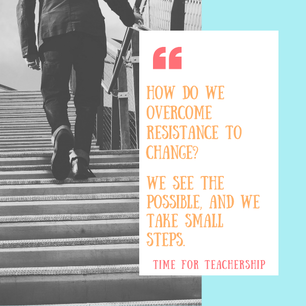






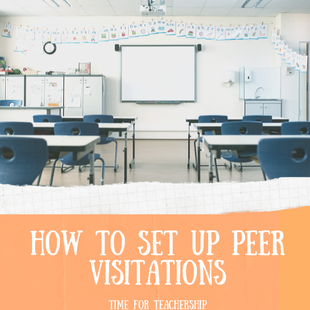






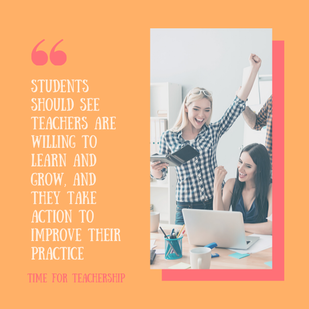


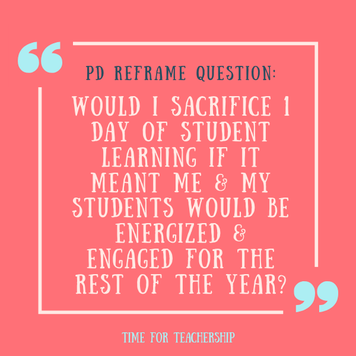

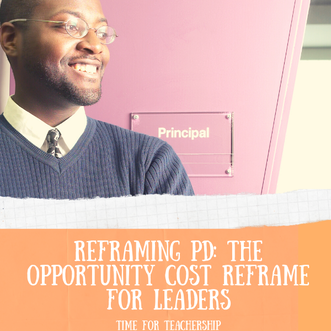









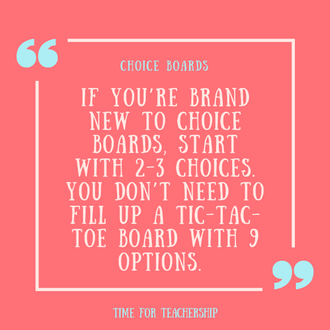
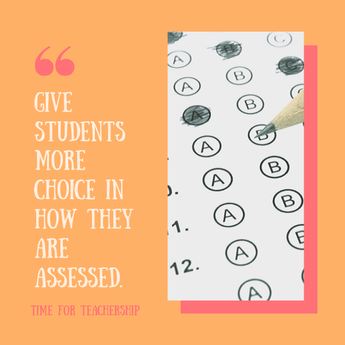

 RSS Feed
RSS Feed